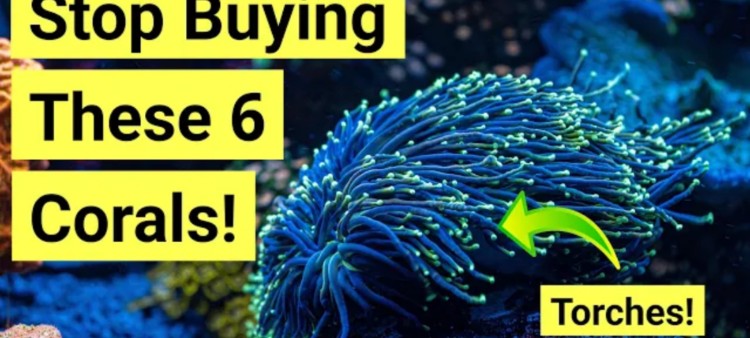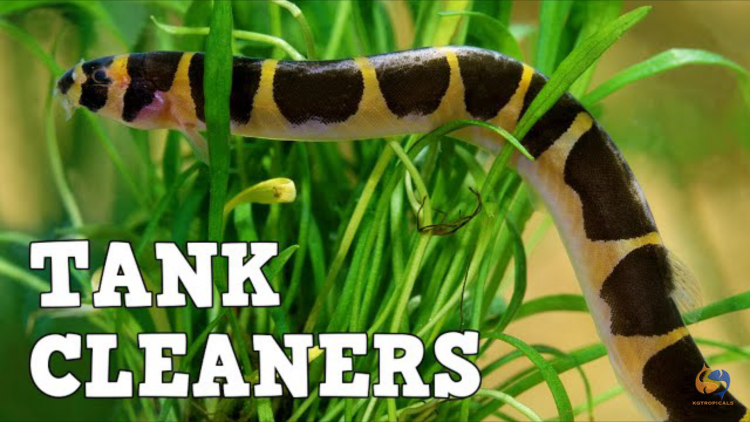Top 6 Beginner Corals That Aren't Actually Easy
- Oct 03, 2022
- Anshika Mishra
- 474 0 0

When looking for your first coral, some corals are often recommended as beginner-friendly but aren't as easy as you might think.
So, here is the list of the beginner corals you might want to think twice about and all the things you need to know before you buy:
1. Walling Hammer Corals
The bright colors, flowing polyps, and interesting shapes make hammer corals absolute catnip for new hobbyists. Unfortunately, it also doesn't take much time to find guys that persuade you how good these are.
But there is one thing that you should always look out for: the growth pattern of the skeleton.
There are two types of hammer corals: wall and branching hammers. The wall variety consists of a single polyp running along the length of a calcium wall, whereas the branching type has several polyps that grow off its branches. Because wall hammers have a single polyp, any disease or infection can quickly spread across the entire length of the coral, causing the whole distance to die.
Whereas if a branching hammer faces similar issues, it often doesn't affect all the polyps, and you can easily break off the healthy branches to save the coral. So ask the shop which type you are looking for before you buy.
2. Acans
Every LPS coral will be a bit more challenging than the hardy's soft corals in the hobby. But the Acan present an additional challenge over most of their LPs cousins. In addition, Acan often has a spectacular color when first imported, which entices beginners.
But they lose their colors where they are in your tank, and those colors are tough to bring back once they are gone. It might be caused by too much light, incorrect nutrient levels, or too much flow. But whatever the cause, there's a good chance that the multi-color specimens you bought will turn red or green.
So, don't give yourself a hard time if that is happening to you, and try not to fall into the trap of chasing rainbow colors for the next two years.
3. Zoas
Zoas are soft corals that are generally a hardy old bunch. However, it would help if you avoided any single polyp Zoas wherever possible. Despite being quick growers, they are just sold as single heads more than any other coral.
Moreover, single polyps are often left for just a week or two after being fragged before they are sold, which is a recipe for disaster. Not only are they unable to heal and survive that young, but at that age, there is also a good chance that they will drop off the frag plug and disappear somewhere in your tank, never to be seen again.
And Zoas are notoriously famous for melting away for no apparent reason. So remember that zoos can sometimes be frustrating and make you feel like you are doing something wrong even when you're not.
4. Scully
Scully is arguably the hardest coral on this list. But they also tend not to do well at tank temperatures o 25 degrees Celsius, which is at the lower end of where most people keep their tanks.
Now, if you have an LPS or soft coral tank, there's nothing wrong with keeping your tank at that temperature. But if you cannot set your tank up just to please this one, you run the risk of losing a Scully over time.
And while this might be a relatively lower risk, the exceptionally high impact gets Scully a place on this list.
5. SPS Coral
Most people like the challenges that an SPS coral presents to new reefers. But people every SPS corals as a first coral often enough to just inclusion on this list.
All SPS coral includes species often recommended as good choices for your SPS coral and challenging to keep for new hobbyists. However, they deplete elements like calcium and alkalinity from your water fast. If you are familiar with maintaining steady parameters or replenishing major components, SPS corals can easily strip and crash your tank in months.
SPS corals are frustrating at the best of times, even for the most experienced hobbyists. It's not that you should be scared of SPS corals; it's just that they are terrible corals to cut your teeth on.
6. Torch Coral
Torches are a hardy coral. They don't uptake elements at a rapid pace, are perfectly happy in less than ideal water parameters, tolerate higher light than most LPS corals, and even sprout multiple heads, so if one polyp dies, the rest of the coral can still survive.
However, torch corals have a nasty habit of wilting and dying just months or weeks after looking in tip-top condition.






About author